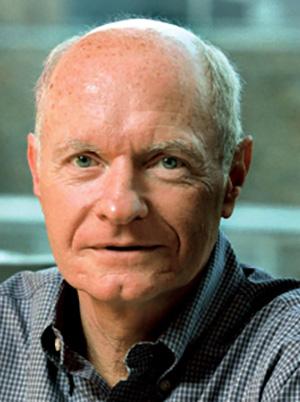Overview
The mission of the NINDS Epilepsy Therapy Screening Program (ETSP) is to facilitate the discovery of new therapeutic agents that address the unmet medical needs in epilepsy. Historically, the ETSP has focused on identifying symptomatic treatments for seizure disorders, but based on recent recommendations from working groups of the National Advisory Neurological Disorders and Stroke (NANDS) Council, the program is focused on identifying therapies that address drug resistant epilepsy, disease modification and prevention. Other key recommendations implemented include forming an External Consultant Board (ECB) to provide regular feedback to the ETSP and changing the name of the program to reflect the emphasis on identifying differentiated therapies to address the unmet medical needs of epilepsy. The program provides opportunities for researchers from academia and research organizations to submit compounds for screening in a battery of in vitro and in vivo epilepsy and seizure assays. These tests are performed at a contract testing facility based at the University of Utah on a blinded and confidential basis and at no cost to the ETSP participants. The NINDS ETSP staff reports test results to participants and provides advice on next steps for promising compounds. Since its establishment in 1975, the program has made important contributions to the development of several FDA-approved drugs for epilepsy, including felbamate (Felbatol), topiramate (Topamax), lacosamide (Vimpat), retigabine (Potiga), cannabidiol (Epidiolex) and cenobamate (Xcopri).
Description of Testing Services
During the 50 successful years of the ETSP, the models in use have changed over time such that new assays have been added to the program and others have been discontinued in-line with the program’s evolving mission. NINDS ETSP is continuously developing and validating new testing approaches to evaluate novel interventions for treating and preventing epilepsy including humanized testing techniques. See the ETSP's PANAChE website for a description of all assays and tests used, both currently and historically, in the ETSP. The site also describes the specific flow charts currently used for evaluation of experimental therapeutics for treatment of epilepsy.
How to Participate
Evaluation of a proposed compound for suitability for testing in the ETSP begins with an assessment of the compound’s biological and chemical rationale that includes a structural comparison within an internal program database of over 30,000 compounds to determine if the compound has been tested previously. Accepted compounds are then evaluated in assays from specific flowcharts (such as the Drug Resistant Epilepsy (DRE) flowchart). Each stage of evaluation occurs with NINDS ETSP staff consultation with the participant. The ETSP provides feedback on results and an assessment of the potential success of each investigational therapeutic that can include small and large molecules, biologics and devices.
Those interested in participating should contact the ETSP Program Director Brian Klein, PhD for more information and to discuss research goals, resources, and timelines. This process will typically begin with an introductory meeting with the NINDS ETSP team. An executed participant agreement between the NINDS and each potential participant is required before submission of a test agent for evaluation. See the ETSP's PANAChE website for a description of the ETSP project enrollment criteria and process.
Confidentiality
NINDS recognizes the importance of confidentiality to the success of the ETSP and its participants. Participation in the ETSP begins only after the appropriate representatives from both the participant's organization and the NINDS sign the confidentiality agreement. This document defines the legal parameters for the partnership. All screening and other communication activities are performed in strict confidence to help safeguard the participant's intellectual property. Chemical structures are considered proprietary unless otherwise specified by the supplier. The only testing undertaken by the ETSP is that agreed upon by participants in collaboration with ETSP personnel. To further assure confidentiality, each newly submitted compound is assigned a unique ETSP number code to be used in communications, tracking, and analysis. Screening personnel are blinded to both the structure and the source of submitted compounds, and screening results are provided exclusively to the participating supplier unless otherwise authorized.
External Consultant Board
The External Consultant Board (ECB) was established in 2015 to provide feedback on the ETSP direction, testing strategy and models and workflows in development. The ECB was established based on recommendations from the 2015 report prepared by a Working Group of the National Advisory Neurological Disorders and Stroke (NANDS) Council following a review of the ETSP. The ECB members are internationally recognized leaders in epilepsy research and bring unique perspective as physician scientists, industry and academic researchers, and patient advocacy. They collectively provide expertise in basic, translational, and clinical research, clinical practice, and drug development. The ETSP meets with the ECB panel biannually to discuss the program’s progress, proposed changes to testing strategy and new directions. However, individual ETSP participants and their project’s data are confidential and are not shared or discussed with the ECB members.
Resources and Tools
News & Events
*** NINDS ETSP staff member(s) planning to attend or make presentation
Artificial Intelligence in Epilepsy and Neurological Disorders
March 3 - 6, 2025, Breckenridge, CO
ASENT Annual Meeting
March 12 - 14, 2025, Bethesda, MD
*** Epilepsy Therapies & Diagnostics Development XVIII Symposium (ETDD)
May 28 - 30, 2025, Leesburg, VA
Anticonvulsant Drug Development Program 50th Anniversary Symposium
June 23, 2025, Salt Lake City, UT
36th International Epilepsy Congress
August 30 - September 3, 2025, Lisbon, Portugal
Society for Neuroscience Annual Meeting
November 15 - 19, 2025, San Diego, CA
*** American Epilepsy Society Annual Meeting / NINDS 75th Anniversary Symposium
December 5 - 9, 2025, Atlanta, GA
Contacts
Brian Klein, PhD | Program Director
Brian.klein@nih.gov
Yogendra Raol, PhD | Scientific Program Manager
Yogendra.raol@nih.gov
Shalini Sharma, M.S. | Scientific Program Manager, Medicinal Chemist
Shalini.sharma@nih.gov
Dhananjaya Kempegowda, B.Eng. | Data Scientist Engineer
Dhananjaya.kempegowda@nih.gov
Lekyla Whitaker | Program Analyst
Lekyla.whitaker@nih.gov
A web-based research tool called PANAChE (Public Access to Neuroactive & Anticonvulsant Chemical Evaluations) provides open access to nonproprietary chemical structures and biological data for compounds previously screened in the ETSP, including antiseizure drugs (ASDs) as well as drugs used for other indications. This database is being populated with data generated by ETSP of known drugs in the public domain, program generated data published by the participant, and ETSP generated participant’s compound data following permission from the participant. PANAChE is also a repository for information on the in vitro assays and in vivo testing currently or historically used in the ETSP.
ETSP Compound Registration and Test Report Web Portal (registration required)
Reports on the ETSP (2020) and ASP (2015 & 2012) from NANDS Council Working Groups
- May 2020(pdf, 357 KB)
- May 2015
- February 2012







